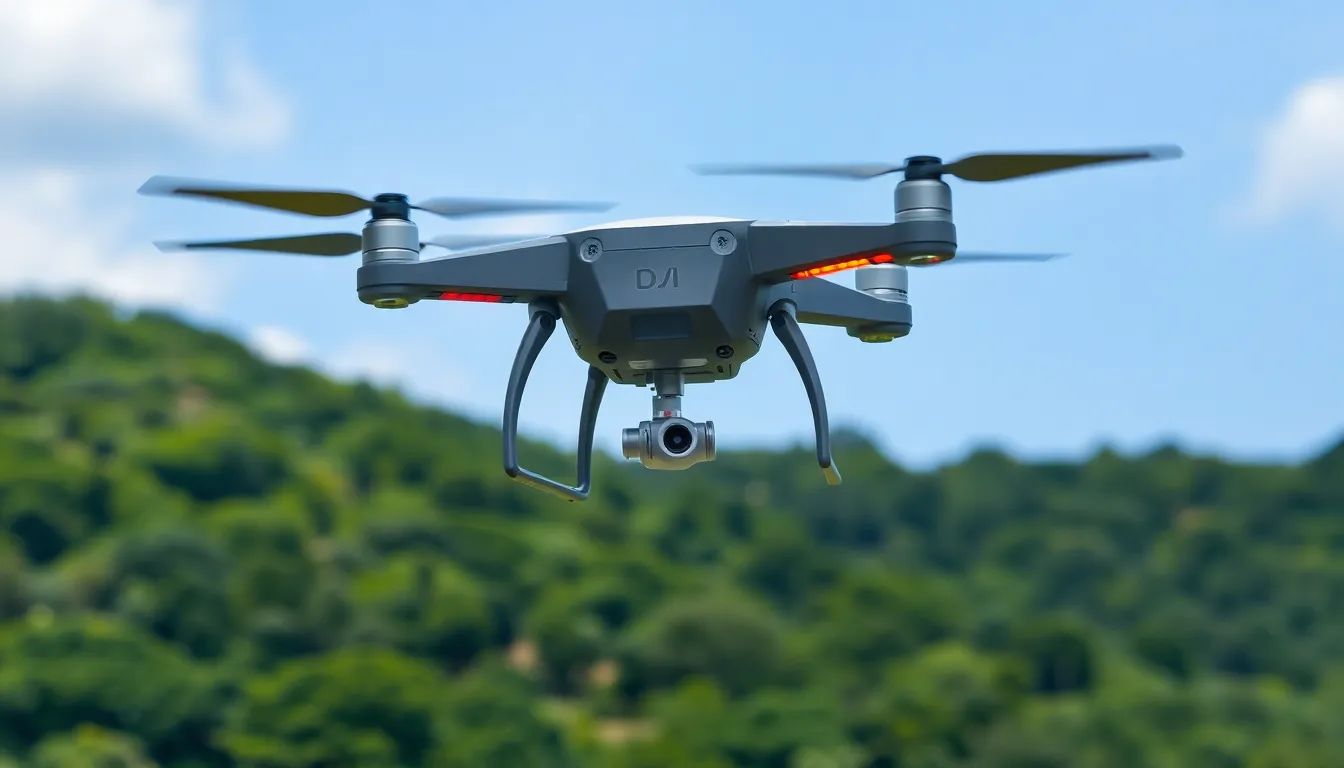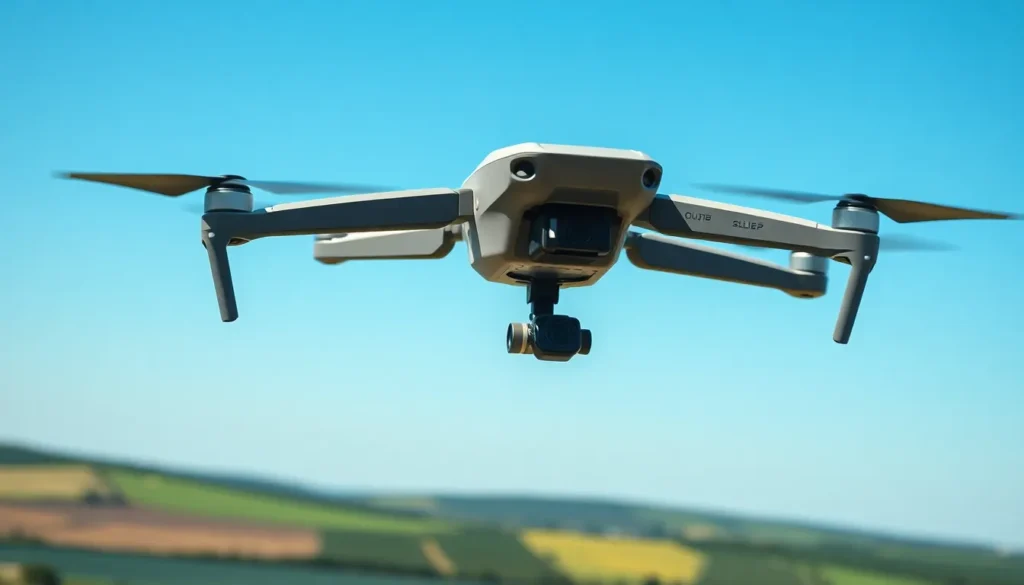In a world where flying machines aren’t just for superheroes, drones have swooped in to transform how we capture stunning aerial views and deliver packages. But what happens when your high-flying buddy decides to play hide and seek? Enter the “return to home” feature—a lifesaver for those who’d rather not go on a scavenger hunt in the great outdoors.
Table of Contents
ToggleOverview of Drones With Return to Home
Drones equipped with the return to home feature enhance user experience and safety. This technology allows drones to autonomously navigate back to their takeoff location with minimal input. Many models utilize GPS signals to determine the home point accurately.
When battery levels drop below a specified threshold, these drones initiate return procedures. Users benefit from reduced risk of losing their devices during flights. Various brands offer this feature, with specifications differing in sensitivity and reliability.
The ease of using return to home functions attracts both hobbyists and professionals. It provides peace of mind, especially for those new to flying.
Settings can often be customized, allowing users to adjust parameters, including the altitude during the return flight. Sensors also contribute to safe landings, mitigating potential crash risks.
Recognized by industry leaders, the return to home feature fosters greater confidence in drone technology. Many drones will alert users to low battery warnings before returning, ensuring proactive management of flights.
Overall, these features combine to deliver a user-friendly experience, making drones more accessible for various applications. Enhancements in this area continue to evolve, reflecting advances in technology and user demands.
Key Features of Drones With Return to Home

Drones with the return to home feature integrate advanced technologies, enhancing safety and usability for users. This section discusses key characteristics, focusing on GPS functionality and sensor technology.
GPS Functionality
GPS functionality powers the navigation of drones equipped with the return to home feature. It allows drones to determine their precise location, providing users with confidence during flights. When signals from GPS satellites are strong, drones accurately track their home point. If a drone loses connection with the remote controller or the battery drops below a set level, it automatically initiates a return journey. This automation greatly reduces the chance of loss, as drones efficiently navigate back to their takeoff spot. Many models support customizable return settings, such as altitude adjustment, ensuring users can tailor the return process according to their preferences.
Sensor Technology
Sensor technology plays a crucial role in the safe landing of drones during their return. Drones utilize various sensors, including ultrasonic and optical ones, to detect obstacles in their flight path. When approaching the ground, these sensors help determine altitude and surrounding terrain. Safe landings rely on this information, minimizing the risk of damage. Some models feature downward-facing sensors that provide additional data for stable landings on uneven surfaces. Additionally, many drones use sensors to give users warnings about potential obstacles, further enhancing safety. This technology not only improves the overall user experience but also contributes to the growing adoption of drones across various sectors.
Benefits of Using Drones With Return to Home
Drones equipped with the return to home feature provide significant advantages. These benefits enhance both safety and user experience.
Safety Enhancements
Safety improves remarkably with the return to home capability. Drones autonomously navigate back to their starting point if they encounter low battery levels. This feature minimizes the risk of losing a drone, especially for beginners who might feel anxious about flying. Additionally, integrated sensors help detect obstacles during return flights, ensuring safe landings. Some models utilize downward-facing sensors, allowing for stable landings even on uneven surfaces. Users feel more at ease knowing their drone can avoid potential hazards while returning home.
Improved User Experience
User experience elevates significantly when using drones with this feature. Customizable settings enable users to adjust various parameters for return flights, including altitude and landing preferences. Such flexibility caters to individual needs, enhancing the flying experience. Alerts for low battery levels add an extra layer of confidence, notifying users before the drone initiates its return. Many users express appreciation for the simplicity that the return to home feature offers, especially when navigating unfamiliar areas. Overall, these factors contribute to a more enjoyable and accessible drone flying experience, appealing to both hobbyists and professionals alike.
Top Models of Drones With Return to Home
Numerous drones support the return to home feature, showcasing advanced technology for safety and convenience. Below are two notable models recognized for their functionality.
Model A
DJI Mavic Air 2 represents a top choice for both hobbyists and professionals. Known for its excellent flight range, this drone maintains a maximum distance of 10 kilometers. Equipped with an advanced GPS system, it ensures accurate location tracking for seamless return flights. Users appreciate the customizable RTH altitude setting, which allows flexibility in navigating return paths. Additionally, integrated obstacle sensors enhance landing safety, making it ideal for new users. Battery performance is impressive, providing up to 34 minutes of flight time before initiating return procedures. The ease of use and reliability of this model makes it a standout option in the market.
Model B
Autel Robotics EVO Lite+ distinguishes itself with robust features tailored for aerial photography. With a 12-kilometer flight range, it provides ample distance for capturing stunning imagery. This drone’s return to home feature utilizes advanced GPS technology, ensuring precision during return journeys. Users can adjust the RTH altitude, accommodating different surroundings for safer landings. Notably, the sensor technology in EVO Lite+ helps avoid obstacles, minimizing risks during return flights. Flight time reaches 40 minutes, giving users confidence to explore longer distances before returning. Its balance of reliability and high-quality visuals makes this model highly sought after among users.
Drones equipped with the return to home feature represent a significant leap in both safety and user experience. This technology not only alleviates the anxiety of losing a drone but also enhances the overall flying experience for users of all skill levels. With customizable settings and integrated sensors, these drones provide a reliable and enjoyable way to explore aerial photography and more.
As drone technology continues to evolve, the return to home feature will likely become a standard expectation among consumers. Its ability to autonomously navigate back to the takeoff point ensures that users can focus on capturing stunning visuals or efficiently delivering packages without the fear of losing their device. Embracing these advancements will undoubtedly lead to a more confident and accessible future for drone enthusiasts.

